Are you tired of the busy and boring life? If you are, it’s time for you to chill out and see different scenery. The Yangtze River is the longest one in China and the scenery along the river is gorgeous beyond your imagination. The steep mountains and the swift currents will bring you a sense of adventure. The Twelve Peaks near Three Gorges are breathtaking with clouds covering the hillside and you can’t tell whether it is reality or fairyland. You can start your Yangtze River cruise tour from Beijing, where you can visit Tian’anmen Square and the Forbidden City. The best way to learn about a country is to understand its history. And then, you can go on your journey by taking the Yangtze River cruise from Chongqing. It is where your Yangtze River Cruise Tour truly begins. Try to relax and appreciate the scenery here. You will love this place. Shanghai is also a must-visit city, where you can see the most prosperous part of China. You can continue your downstream Yangtze River Cruise tour with Shanghai. Have a walk around the Bund, and the fast development of China will make you impressed.

Welcome to Beijing! Upon your arrival, your tour guide will be waiting for you at the arrival lobby and take you to the hotel arranged for you. Have a good rest at the hotel and be prepared for tomorrow’s journey. Beijing, as the capital of China, is a must-visit city and you can learn more about Chinese culture and history here
Are you ready to start your journey? In the morning, you will firstly go to Tian’anmen Square. Tian’anmen Square is located at the center of Beijing covering a total area of 4,800 square meters. Tian’anmen Square was built in the 15th year of Yongle in the Ming Dynasty (1368-1644) by Kuai Xiang, a famous architect hired by the royal family. The gate tower of Tian’anmen has five gates and a portrait of Chairman Mao Zedong hangs above one of the gates with two slogans beside the portrait, which are “Long live the People’s Republic of China”, and “Long live the great unity of the people in the world”. It is worth noting that a pair of Marble Pillar stands in front of Tian’anmen Square. Dragons and auspicious clouds (represent power and auspiciousness in China) are carved on the surface of the pillars and the sculpture of Hou (a mythical creature in Chinese legends) stands at the top of the pillar. The Marble Pillars were set to warn emperors not to amuse themselves outside and delay his work. Take a closer look at the Marble pillars, and you will be amazed at how delicate they are.
And then, you will go to visit the Forbidden City (closed each Monday). The Forbidden City began construction in 1406 and it took 14 years to finish its building. The Forbidden City is centered by three halls, which are Hall of Harmony, Hall of Central Harmony, and Hall of Preserving Harmony and it covers an area of 720,000 square meters with more than 70 palaces and about 9,000 houses. The three halls mentioned above are located in the outer court where emperors dealt with national affairs and there is also an inner court centered by the Palace of Heavenly Purity, Hall of Union, and Palace of Earthly Tranquility. The inner court is the royal family’s living place. The Forbidden City with a history of 600 years has witnessed unprecedented changes in Beijing. Can you imagine how many magnificent treasures are collected in the Palace Museum? More than 1.8 million! I believe if you take a look at the treasures in the museum, you will learn more about Chinese culture and the ancient people’s wisdom. There is an interesting phenomenon in the Palace of Heavenly Purity. The stone lions sitting in front of the palace have their ears down. Do you know why? In ancient China, women were not allowed to talk about politics, and therefore, the stone lions were put there to remind women of obeying their husbands and keeping their mouths shut when referring to politics. It doesn’t work in modern China.
In the afternoon, your first stop is the Temple of Heaven. Temple of Heaven lies in the south of Beijing covering an area of 273,000 square meters. The Temple of Heaven was built in the Ming Dynasty (in 1420). Temple of Heaven served as a sacrificial altar for emperors in the Ming and Qing (1636-1912) Dynasties to offer sacrifice to heaven and pray for a bumper harvest. Temple of Heaven includes Circular Mound Altar and Altar of Praying for Grain. There are a lot of procedures before the sacrifice. For example, the emperors should take a shower and change clean clothes for the sacrifice. There is a Changing Clothes Platform in front of the sacrificial altar. The emperors would change their clothes there to show their respect for heaven. However, on that day, emperors would not wear yellow clothes but blue clothes, for heaven is blue (In ancient China, only emperors are allowed to wear yellow clothes with dragon embroideries to show their supreme position). Now, the Changing Clothes Platform offers ancient costumes for consumers to put on.
Your next stop is the Summer Palace. The Summer Palace is a royal garden built in the Ming Dynasty, not far away from the Old Summer Palace. Before Emperor Qianlong took the reign, there were four large royal gardens in the west suburb of Beijing. In 1705, Emperor Qianlong spent a lot of money in building the Summer Palace to please his mother, Empress Chongqing. Inside the garden, you will feel like being in the south of China because there are a lot of plants with lakes and mountains interlaced with each other. It is said that Emperor Qianlong ordered to divert waters from West Lake to the Summer Palace for the plants and lakes and also for irrigation. You can take a walk in the Summer Palace and appreciate its beautiful scenery. Or you can also walk around the palaces where emperors and their imperial concubines used to live and have fun. If you pass by the Hall of Benevolence &Longevity, you may see two pairs of bronze statues of dragons and phoenixes. In ancient China, the dragon represented the emperor and the phoenix stood for the empress. And dragon would be put in the middle and phoenix aside the dragon to show the emperor’s absolute authority. However, when Empress Dowager Cixi was in power, the position of dragon and phoenix was changed to show her supreme position and even Emperor Guangxu was subject to her. Just look at the decorations in the palaces and the history at that time, and you will know how powerful Empress Dowager Cixi was and what her extravagant life looked like.
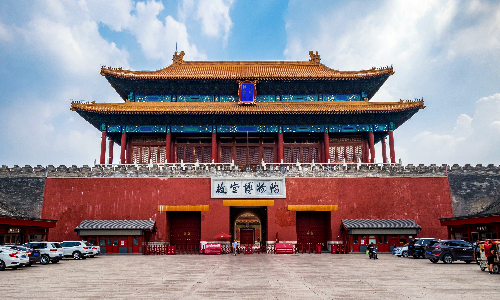
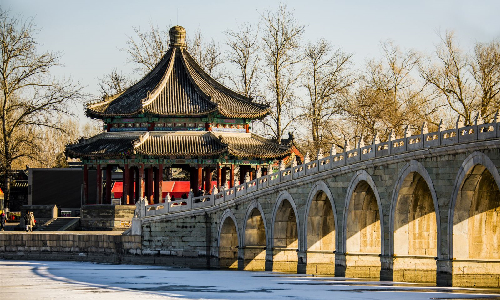
Today, in the morning, you will head to the Ding Tomb of the Ming Tombs. Ming Tombs are located at the foot of Tianshou Mountain, covering an area of about 120 square kilometers. The 13 tombs began their construction in 1409, surrounded by mountains. During the 230 years of construction, there are 13 tombs for emperors, 7 tombs for imperial concubines, and 1 for eunuchs. Ding Tomb of the Ming Tombs was built for the 13th emperor of the Ming Dynasty, Zhu Yijun, and his two empresses from 1584 to 1590. When the tomb finished building, the emperor was only 24 years old. There is an interesting story about a smart craftsman happening during the construction of the tomb. At that time, more than 30,000 workers were hired to build the Ding Tomb, however, when Emperor Zhu Yijun came here to see how was everything going on, he found the workers weren’t industrious. He was furious and a craftsman came forward and said if we finish building the tomb quickly, doesn’t that mean you are going to pass away soon? Hearing this, the emperor became happy again. As the only excavated tomb of the 13 Ming Tombs, you can visit Ling’en Hall, Ling’enmen Gate, Enclosing Wall, Soul Tower, and the underground palace. You will see how particular the Chinese are about the setting of their tombs in ancient times.
After lunch, you will visit Badaling Great Wall. Badaling Great Wall is located at the edge of the North Plain of China. It was built in 1505 with a length of 650 kilometers. As a natural barrier of Beijing, Badaling Great Wall is strategically located at the access to Shanxi, Inner Mongolia, and Zhangjiakou. Badaling Great Wall’s position is of great importance. The mountains here overlap and the imposing walls here extend north and south through the mountains, with no end in sight. As one of the eight great wonders in the world, Badaling Great Wall has received many foreign distinguished guests, such as Nixon, Regan, and Bush, former U.S. president, Elizabeth the second, and Mrs. Thatcher, former UK Prime Minister. There is also a famous saying in China, He who doesn’t reach the Great Wall is not a true man. Therefore, Badaling Great Wall is a must-see place and a test of bravery.
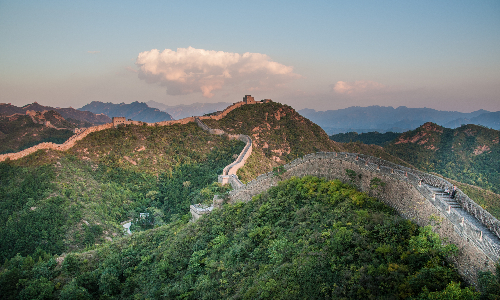
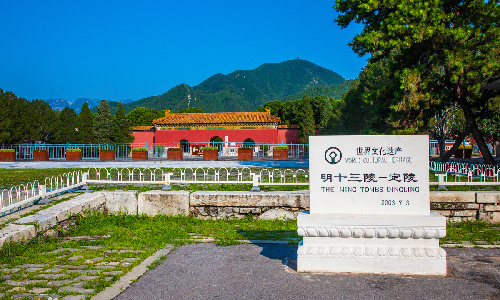
 Chongqing
Chongqing Yangtze River Cruise
Yangtze River Cruise Today is your last day in Beijing. It’s time to say goodbye to this cultural city. After breakfast, you can pack your luggage in your room. And then, your tour guide will take you to the airport and you will take the estimated flight CA1445 11:00/14:05 to Chongqing, a modern city in China and also a paradise for those who love spicy food. As soon as you arrive in Chongqing, your tour guide will pick you up and you will be transferred to the Yangtze River Cruise. Yes! You are going to spend two days on the cruise and have a chance to practice TaiChi with the teachers. Your tour guide will help you check in and you will spend your first night on the Yangtze River Cruise.
Are you excited about today’s schedule? In the early morning, you can practice TaiChi on the Deck and there will be teachers to teach you a few moves. Chinese people believe that the whole day’s work depends on a good start in the morning. Practicing TaiChi in the morning will help you refresh yourself and be energetic for the whole day.
And then, you will start your shore excursion to the Ghost City of Fengdu. The Ghost City of Fengdu was built in the Han Dynasty (202 BC-220) and has a history of nearly 2,000 years. It is said to be where the dead’s souls rest. The Ghost City of Fengdu is located in the upper reaches of the Yangtze River and hides in the mountains. People created the Palace of Hell, the Gate of Hell, the afterlife world, and the bottom of hell and other institutions according to laws in the mortal world to punish those who committed crimes when alive. The images of ghosts there vary and look eccentric. The torture devices are terrifying and unsettling. Even though the statues of ghosts here are scary, they are essential in researching Chinese culture on spirits and view of God, ghosts, paradise, and hell. Some famous Chinese poets, such as Lu You, Su Shi, and Fan Chengda have inscribed poems on the mountains, adding a sense of culture to this place. There is a Bridge of Sigh at the hillside of the Mountain. It is said that when people are dead, they should drink the tea made by Mengpo, who manages the Bridge of Sigh, and then they will forget everything in the mortal world and start a new life.
After enjoying your buffet lunch, you can choose to go ashore and pay an extra fee to visit Shibao Pagoda. Shibao Pagoda was built in the Ming Dynasty near the riverside of the Yangtze River. Shibao Pagoda is called Pearl in the River because of its location. It is said that the mountain where Shibao Pagoda erects is a huge stone left by Nu Wa, a goddess in Chinese mythology who used 7 huge stones to fix the hole in the sky. The Huge stone is in the shape of a jade seal (Yuyin in Chinese). Therefore, the mountain is called Yuyin Mountain. Shibao Pagoda consists of the gate of the pagoda, the body of the pagoda, and the attic at the top with a height of 56 meters. There is a Bridge of Love in the Hall of Emperor. It is said that if you can pass it with a singular number of steps and within 10 steps, all of your wishes will come true. Do you want to try it by yourself?
In the evening, you will be invited to the Captain’s welcoming party. The Captain will deliver a short speech to welcome you. And then you can have a drink and socialize with others. If you like, you can dance with your new friends, and I’m sure you will catch everybody’s attention. Of course, you can share with others your traveling experience, and maybe you will find some like-minded friends. Enjoy yourself at the party.
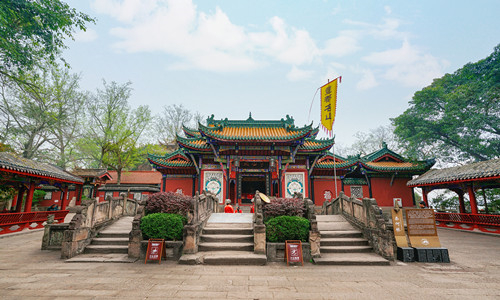
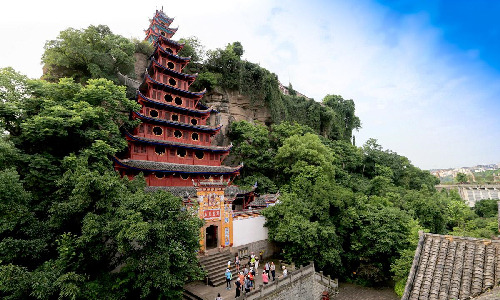
You can start your day by practicing TaiChi with teachers on the deck and try to remember some new moves. If you go back home and show it to your friends, they will be amazed at your kung fu.
In the morning, we will pass by Qutang Gorge. Qutang Gorge starts from White Emperor Mountain in the west and to Wushan County in the east with a length of 8 kilometers, the shortest one of the Three Gorges (Qutang Gorge, Wu Gorge, and Xiling Gorge). Escarpments stand on both sides of the Yangtze River with a height of 1,500 meters. And the Yangtze River at this part is as narrow as 50 meters. Along the river, you can see the old plank road sites and inscriptions on the walls of rock, which are quite marvelous. There are many famous attractions here, such as White Emperor City, the Ancient Town of Fengjie, and the Yufu Tower.
There are many cultural relics stored in White Emperor City. If you are interested in it, you should visit it at your own expense. White Emperor City was built in the West Han (201 BC-9) Dynasty. It lies at an altitude of 245 meters. It is said that Gongsun Shu occupied this place in the West Han Dynasty and named himself White Emperor. He ordered to build White Emperor City here. During his reign, his people didn’t be harassed by wars and lived stable life. Therefore, local people built White Emperor Temple in memory of Gongsu Shu. However in the 12th year of Jiajing in the Ming Dynasty (in 1553), the statue of Gongsun Shu was destroyed and White Emperor Temple was renamed Sangong Temple to enshrine General Ma Yuan of the Han Dynasty who used to stop Gongsu proclaiming himself emperor, God of Earth, and God of River. For its long history, there are a lot of cultural relics excavated, such as bronze tripods, bronze mirrors, and porcelain pots.
In the afternoon, we will drop by Wu Gorge and Xiling Gorge. Wu Gorge is 46 kilometers long, starting from Wushan County to Badong County. It is also called Big Gorge. Wu Gorge is famous for its beautiful scenery. The whole gorge has many strange peaks, jagged rocks, craggy walls, and continuous stretches, which are the most impressive section of the Three Gorges, just like a winding gallery. The Twelve Peaks on both sides of the Yangtze River are breathtaking, especially the Goddess Peak. The twelve peaks are in different shapes and the scenery here is picturesque. Wu Gorge is deep and narrow and the sunshine time here is short. Therefore, the moisture here is not easy to disperse. The clouds are hovering above the Wu Gorge, creating a sense of mystery. Except for the Twelve Peaks, you can also visit the Goddess Temple, Kongming Tablet, and Luyou Ancient Cave.
Xiling Gorge is the longest part of the Three Gorges with a length of 76 kilometers. It is famous for its winding waterways and strange rocks. Xiling Gorge has 4 sections from upper reaches to lower reaches, which are Xiangxi Wide Valley, Upper Wide Valley in Xiling Gorge, Miaonan Wide Valley, and Lower Wide Valley in Xiling Gorge. Xiangxi Wide Valley is 45 kilometers long and there are many gorges in the valley, such as Bing Shu Bao Jian Gorge, Kongling Gorge, and Dengying Gorge. Some famous poets in history, such as Lu Yu, Bai Juyi, Su Shi, and Su Xun, were impressed with the beautiful scenery here and wrote many poems about Xiling Gorge. Now, you can see the scenery here by yourself, and have the same feeling as these talents.
Notice: Cruise routes and excursions may vary depending on the cruise ship and the weather.
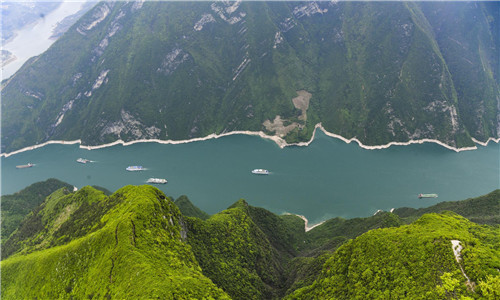
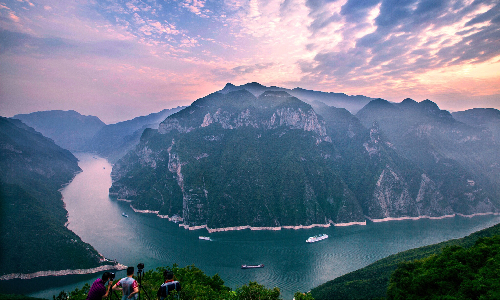
 Yichang
Yichang Shanghai
Shanghai After breakfast, you will visit the Three Gorges Dam. Three Gorges Dam is 38 kilometers away from Gezhou Gorge Water Conservancy Project and is the largest hydropower station in the world. It is 3,335 meters long and 185 meters high. Three Gorges Dam began its construction in 1994 and was finished in 2006 with a total investment of 95.4 billion yuan. Even though the Three Gorges Dam wasn’t built until 1994, the Chinese government had planned on how to construct it in early 1930. After the founding of the People’s Republic of China (in 1949), the State Council provided supports in exploring, planning, and designing the Three Gorges Dam. From 1953 to 1958, Chairman Mao Zedong met with the manager of the construction of the Three Gorges Dam six times to solve the problems they will encounter when building it. At that time, China was not strong enough and didn’t have advanced technology. Therefore, it was marvelous that China made it and built the Three Gorges Dam into one of the greatest projects in the world. Just come here and experience how much efforts China has put into this project.
If you are interested in Ship Lift, you should pay an extra fee and experience it. The Three Gorges ship lift is designed to accommodate large 3,000-ton passenger ships, tourist ships, and some cargo ships. Many ships are crossing the Yangtze River each day and sometimes it will take hours for the ships to pass through the navigation lock. With Ship Lift, the waiting hour will be shortened from 4 hours to 40 minutes. Isn’t that effective?
Notice: Cruise routes and excursions may vary depending on the cruise ship and the weather.
After the visit, you will take a Shuttle bus to the Three Gorges Visitor Center in Yichang. Upon your arrival, your tour guide will pick you up and take you to the train station. You will take the estimated train D354 14:46/22:21 to Shanghai. Within 8 hours, you will arrive in Shanghai, a prosperous cosmopolis. Your tour guide will be waiting for you at the arrival lobby and you will be transferred to the hotel. Shanghai is an economic center in China with a large population. You can have a glimpse of its rich culture and long history and also its most bustling attractions.
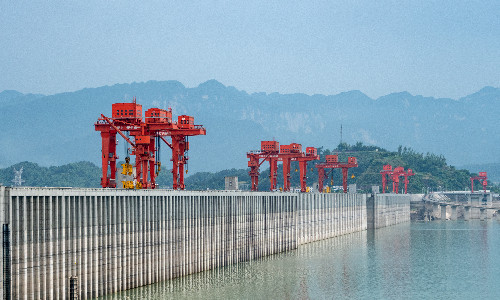
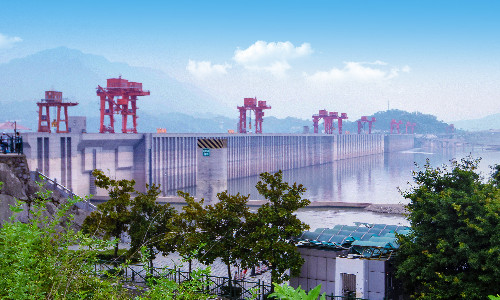
In the morning, your first destination is Jing’an Temple. Jing’an Temple was built in 247 with an area of 22,000 square meters. It consists of the Grand Hall, the Hall of Heavenly Kings, and the Hall of Three Sages. Jing’an Temple is the oldest Buddha temple in Shanghai. The famous ink paintings of Zhu Da (1626-1705), grandson of Emperor Zhu Yuanzhang of the Ming Dynasty are stored in Jing’an Temple. On the second floor of Jing’an Temple hangs a bell with a weight of 7.3 tons and a height of 3.3 meters. There is a Bubbling Well in the temple. From its name, you can guess that the well water keeps bubbling like boiled water. Local people, therefore, regard here as a mysterious place.
Your next destination is Yu Garden (closed each Monday). Yu Garden is located in the old city town of Shanghai. It is a classical garden in the style of Southern China built in the Ming Dynasty. Yu Garden covers a total area of 20,000 square meters. Its owner, Pan Yunduan, an official in Sichuan built it in 1559 in the hope of having a place to enjoy his retirement life. However, in Pan’s later years, his family seemed not doing well and he can’t afford to manage the garden. Some local wealthy merchants bought Yu Garden to protect it from falling into disuse. In 1999, at the 440th anniversary of the building of Yu Garden, Jiang Zemin, former government leader of China inscribed “ Famous Garden in the Sea” for Yu Garden.
In the afternoon, you will first go to Shanghai World Financial Center. It is a skyscraper located in Lujiazui Finance and Trade Zone. It is 492 meters high with 104 floors, 101 on the floor, and 3 underground. This center covers a construction area of 381,600 square meters. The sightseeing lobby is on the 94th, 97th, and 100th floors. Standing at the height of almost 400 meters, you are going to see the most gorgeous scenery in the world. Looking downside, you will see the Huangpu River flowing at your feet, and looking afar, the Oriental Pearl Tower will be winkling at you.
And then, you will go to the Bund. The Bund is located at the riverside of the Huangpu River. It is 1.5 kilometers long and since Shanghai opened its port, foreign banks, commercial firms, and newspaper offices gathered here. The Bund, together with the Oriental Peral Tower, Shanghai Tower, Shanghai Jinmao Tower, and Shanghai World Financial Center has become the symbol of reform and opening up and modern construction in Shanghai since 1994. If you come here, you can have a walk at Huangpu Park. Inside the park, there is a People’s Heroes Tower, which erects at the boundary of the Huangpu River and the Suzhou River. it was built in memory of heroes who sacrificed in the fight to seek liberation.
Your last destination today is Nanjing Road. Nanjing Road includes West Nanjing Road and East Nanjing Road. If you are a shopping and food lover, don’t miss this place. Nanjing Road was the first commercial street built since Shanghai opened its ports. It is a window to the outside world and a paradise for shopping lovers at home and abroad. You can find anything you like here. Just drop by some famous shops, such as Laojiefu, a silk shop, Laofengxiang, a famous gold shop, and Hengdeli, a clock shop. I’m sure you can pick something you like and you can also bring some of them as gifts to your friends and families.
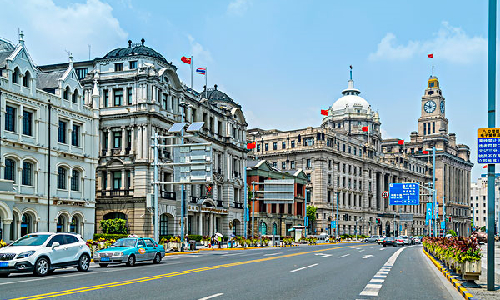
It’s time to say goodbye. After breakfast, your tour guide will take you to the airport. We hope you had a wonderful time in China. Whenever you like, please come back to China again. We are looking forward to seeing you next time.
Author: Chi Mengdi
| City | Five Star hotel list | Four Star hotel list |
|---|---|---|
| Beijing | Sunworld Dynasty Hotel Beijing Wangfujing | Sunworld Hotel Wangfujing |
| Yangtze River Cruise | Victoria Anna | Victoria Anna |
| Shanghai | Ocean Hotel Shanghai | Ambassador Hotel |
 |
![]() About your child or infant, please contact us for a discounted price.
About your child or infant, please contact us for a discounted price.



We started with a few days in Beijing & ended in Shanghai, from where we visited the Forbidden City and Great Wall. In between we visited Terra Cotta Warriors Museum, Panda Base, Shanghai Disneyland.

We had a wonderful holiday in China which will remain long in the memory. China is a breathtakingly beautiful country full of splendid temples and palaces, mountains and rivers, peaceful rural scenes and bustling shopping streets.
 QUICK ENQUIRY
QUICK ENQUIRY